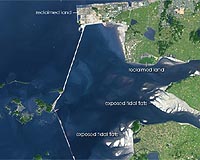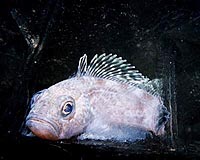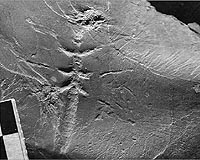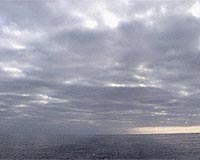| October 22, 2008 |  |
TerraDaily Advertising Kit |
|
SKorea announces new 14.2 bln dlr plan to develop wetlands Seoul (AFP) Oct 21, 2008  South Korea on Tuesday announced an amended 18.9 trillion won (14.2 billion dollar) plan for developing a vast wetland area on its southwest coast, fuelling fears of environmental damage. The tidal area around Saemangeum estuary was dammed in 2006 following a long fight between the government and environmentalists, who said the reclamation project would deprive migratory birds of a key habit ... read more
South Korea on Tuesday announced an amended 18.9 trillion won (14.2 billion dollar) plan for developing a vast wetland area on its southwest coast, fuelling fears of environmental damage. The tidal area around Saemangeum estuary was dammed in 2006 following a long fight between the government and environmentalists, who said the reclamation project would deprive migratory birds of a key habit ... read moreTuna under threat in key SE Asia ecosystem: WWF  Jakarta (AFP) Oct 21, 2008
Jakarta (AFP) Oct 21, 2008Key tuna species are under threat from overfishing in Asia's diverse Coral Triange region and a drastic rethink is needed to stave off collapse, environmental group WWF said Tuesday. Tuna species in the triangle, including heavily overfished bluefin and bigeye tuna, are under increasing pressure as fleets move in from depleted fishing grounds in other parts of the world, WWF researcher Lida ... more |
Airbus acknowledges slow progress on hydrogen plane
Trump slams paper straws, vows 'back to plastic' Iran schools, offices close in cold snap Rare otter 'disappeared' in Kyrgyzstan, experts warn UK MPs warn billions spent on carbon capture may hit bills UK engineers warn on AI risks to environment A stream turns blood red in Argentina, residents blame pollution Indonesia halts development of estate hosting Trump properties COP30 president urges most 'ambitious' emissions targets possible Fighting global warming in nations' self-interest: UN climate chief
|
|
| Previous Issues | Oct 21 | Oct 20 | Oct 18 | Oct 17 | Oct 16 |
Syrian grain output strangled by drought Damas (AFP) Oct 21, 2008
Damas (AFP) Oct 21, 2008Syria's worst drought in 40 years is strangling grain production, prompting authorities to seek aid from the UN's Food and Agricultural Organisation, the official SANA news agency reported on Tuesday. Wheat production has fallen by 53 percent in 2008 and that of barley by 68 percent, with thousands of families affected, SANA said. The FAO and other UN agencies have launched an appeal for ... more Scientists Map Soils On An Extinct American Volcano  Madison WI (SPX) Oct 22, 2008
Madison WI (SPX) Oct 22, 2008Union County New Mexico is a landscape of striking diversity. Out of expansive rangelands rise sporadic yet majestic cinder cone volcanoes and mesas preserved by basalt, part of the Raton-Clayton Volcanic Field. Capulin volcano, formed approximately 62,000 years ago, is the youngest volcano in the field. The cone rises 396 m from the plain, reaching an altitude of 2,495 m above sea level. ... more Scientist turns to ink-jet printer for a new heart  Toyama, Japan (AFP) Oct 21, 2008
Toyama, Japan (AFP) Oct 21, 2008The technology is the same as that of the simple inkjet printer found in homes and offices, but Japanese scientist Makoto Nakamura is on a mission to see if it can also produce human organs. The idea is for the printer to jet out thousands of cells per second -- rather than ink droplets -- and to build them up into a three-dimensional organ. "It would be like building a huge skyscraper ... more |
forest:
 life:  life:  |
Researchers Turning Freshwater Farm Ponds Into Crab Farms Raleigh NC (SPX) Oct 22, 2008
Raleigh NC (SPX) Oct 22, 2008Work by researchers at North Carolina State University is leading to a new kind of crab harvest - blue crabs grown and harvested from freshwater ponds, instead of from the sea. Crab lovers shouldn't worry, researchers say, because the pond-raised crabs look and taste just like their ocean-raised brethren. North Carolina's native blue crab population has been at historic lows since ... more Pesticide Concentrations Decreasing  Madison WI (SPX) Oct 22, 2008
Madison WI (SPX) Oct 22, 2008The widespread use of pesticides across the United States has been in practice for decades, with little knowledge of the long-term effects on the nation's groundwater. The results of a new study show that samples taken from over 300 wells across the US have not retained a high concentration of pesticide contamination. The news is a result of a decadal long study to assess the extent of the ... more New Fossil Reveals Primates Lingered In Texas  Austin TX (SPX) Oct 22, 2008
Austin TX (SPX) Oct 22, 2008More than 40 million years ago, primates preferred Texas to northern climates that were significantly cooling, according to new fossil evidence discovered by Chris Kirk, physical anthropologist at The University of Texas at Austin. Kirk and Blythe Williams from Duke University have discovered Diablomomys dalquesti, a new genus and species of primate that dates to 44-43 million years ago ... more MU Scientist Uses Tracer To Predict Ancient Ocean Circulation  Columbia MO (SPX) Oct 22, 2008
Columbia MO (SPX) Oct 22, 2008Even though the Cretaceous Period ended more than 65 million years ago, clues remain about how the ocean water circulated at that time. Measuring a chemical tracer in samples of ancient fish scales, bones and teeth, University of Missouri and University of Florida researchers have studied circulation in the Late Cretaceous North Atlantic Ocean. The Late Cretaceous was a time with high ... more |
climate:
 oceans:  arctic:  |
| Previous Issues | Oct 21 | Oct 20 | Oct 18 | Oct 17 | Oct 16 |
| The contents herein, unless otherwise known to be public domain, are Copyright 1995-2008 - SpaceDaily. AFP and UPI Wire Stories are copyright Agence France-Presse and United Press International. ESA Portal Reports are copyright European Space Agency. All NASA sourced material is public domain. Additional copyrights may apply in whole or part to other bona fide parties. Advertising does not imply endorsement, agreement or approval of any opinions, statements or information provided by SpaceDaily on any web page published or hosted by SpaceDaily. Privacy statement |